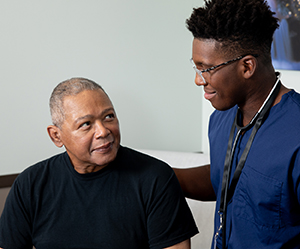You’ll work closely with your health care team to create a plan for recovery. This plan may include:
-
Tests to check how well your heart is healing.
-
Treatments, such as medicines or procedures, to help your heart work better.
-
Cardiac rehab (rehabilitation) to help make your heart healthier. Ask your health care provider for a referral.
-
Managing your risk factors. These are the things that put you at risk for another heart attack.
-
Frequent follow-ups with your provider.
-
Assessing your overall health and treating other medical conditions.
Your role
You play the biggest role in your recovery plan. Only you can make the lifestyle changes needed to help prevent another heart attack.
-
Ask any questions you have and get the answers you need.
-
Ask for support following your plan, making changes, and learning new habits.
-
Know your options and take part in making treatment decisions.
-
Follow the plan you've agreed on with your health care provider. When you have questions, always ask.



